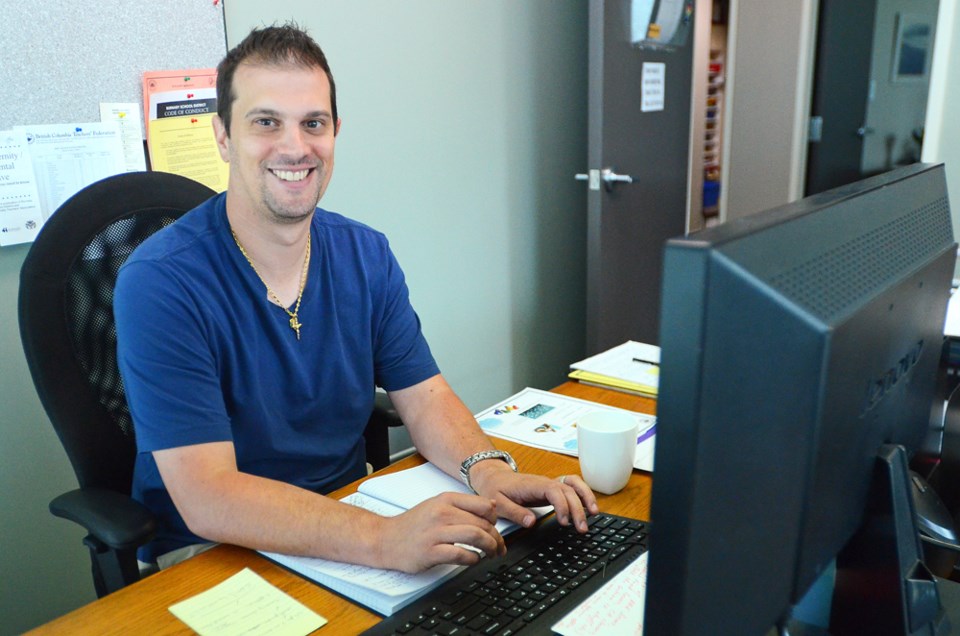Burnaby school district officials will travel back in time this spring as they work to get their hiring in line with working conditions agreed to nearly 20 years ago.
Under a deal between B.C. teachers and the provincial government – ratified by teachers and local boards earlier this month – provisions in the teachers’ collective agreement around class-size limits, limits on the number of special needs students in a class and the required ratio of specialist teachers to students should be back in place in time for hiring for next school year.
The agreement is the result of a November Supreme Court of Canada ruling that restored class-size, class-composition and specialist-teacher ratio provisions in the teachers’ contract after finding the provincial government had stripped them illegally in 2002.
“It’s strange. It’s sort of like going back in time almost,” Burnaby Teachers’ Association president Frank Bonvino told the NOW. “You’re taking that language that was there and the spirit of what was there and you’re now plunking it in the current context. Unfortunately, we’re sort of out of practice with it because we’ve been living a different reality for the last 15 years.”
The recent agreement will mean slightly different things for different districts, according to Bonvino, based on their local bargaining history.
The stripped 2002 contract had replaced one that had been bargained provincially in 1998.
Before that, local unions like the BTA had bargained directly with local school boards.
If their local bargaining had resulted in lower class-size limits, fewer special needs students per class and higher ratios of specialist teachers to students, local unions were allowed to keep those provisions, Bonvino said.
Burnaby has a number of these so-called “superior local provisions.”
“There was this interplay between what you were exchanging at the bargaining table, like salary and class size and class composition,” Bonvino said. “Sometimes you’d have to say one or the other. Burnaby did have some class-size and class-composition language that other locals didn’t have.”
That’s likely going to create some “pressure points,” according to Bonvino.
While the newly restored provincial class-size limit on English language learning (ELL) classes is 30, for example, the Burnaby limit is 20.
“There’s quite a huge difference there, going from 30 in a class to 20 in a class,” Bonvino said, “and ELL traditionally is a subject that it’s not always easy to find enough teachers for to begin with.”
For shop and home economics classes, the provincial limit is 30 students, while the limit in Burnaby is 26.
Burnaby is also one of the few districts in the province that has established district class-size limits.
In kindergarten to Grade 7, the class-size average can’t exceed 24.3 students in Burnaby. In Grade 8 to 12, it can’t exceed 25 – and the district isn’t allowed to count small, special classes, like alternate programs or study blocks, when calculating the average.
“What that does is that, even though for Grade 8 to 12, for example, we have a class-size maximum of 30, if they start filling virtually every class to 30, the class-size average is going to be really close to 30, and then they would be in violation of the collective agreement because we’ve got the average class-size for the district can be no higher than 25. That pushes it down,” Bonvino explained.
As the district ramps up its hiring process after the spring break, these differences could mean a need for more teachers in Burnaby than in other districts – at a time when districts around the province will be looking to hire.
“Recruitment is going to be the biggest challenge,” Bonvino said. “There’s only so many teachers to go around.”
The staffing crunch is already making itself felt in the form of teacher-on-call shortages.
The Burnaby district has spent $300,000 less on substitute teachers than projected this year, according to its amended budget presented last month.
Since January, when the province announced it would spend $50 million this year on 1,000 new teaching positions provincewide as the first step in addressing the Supreme Court ruling, there simply haven’t been enough TOCs to fill in for every teacher absence, according to the district’s amended budget presentation.



